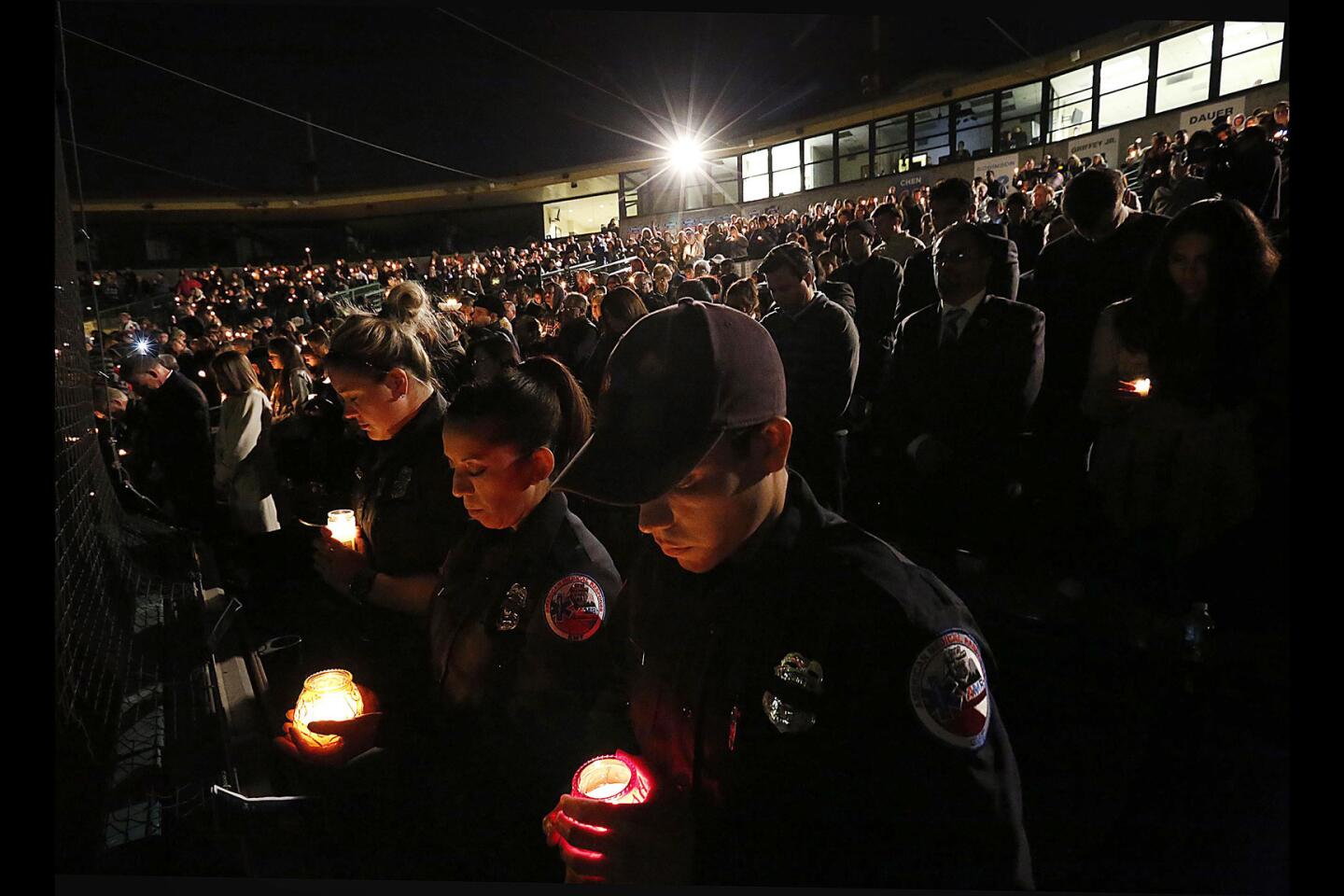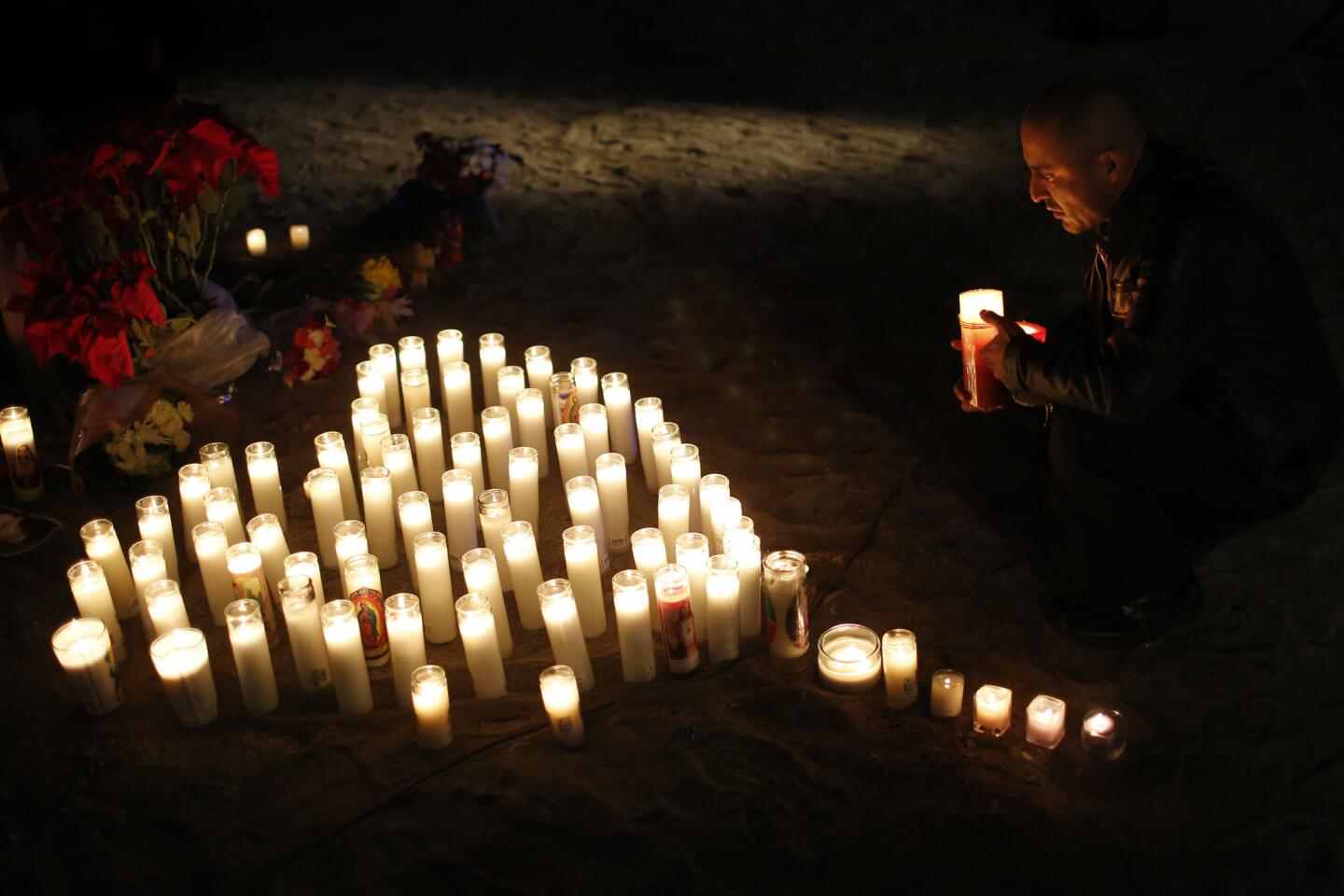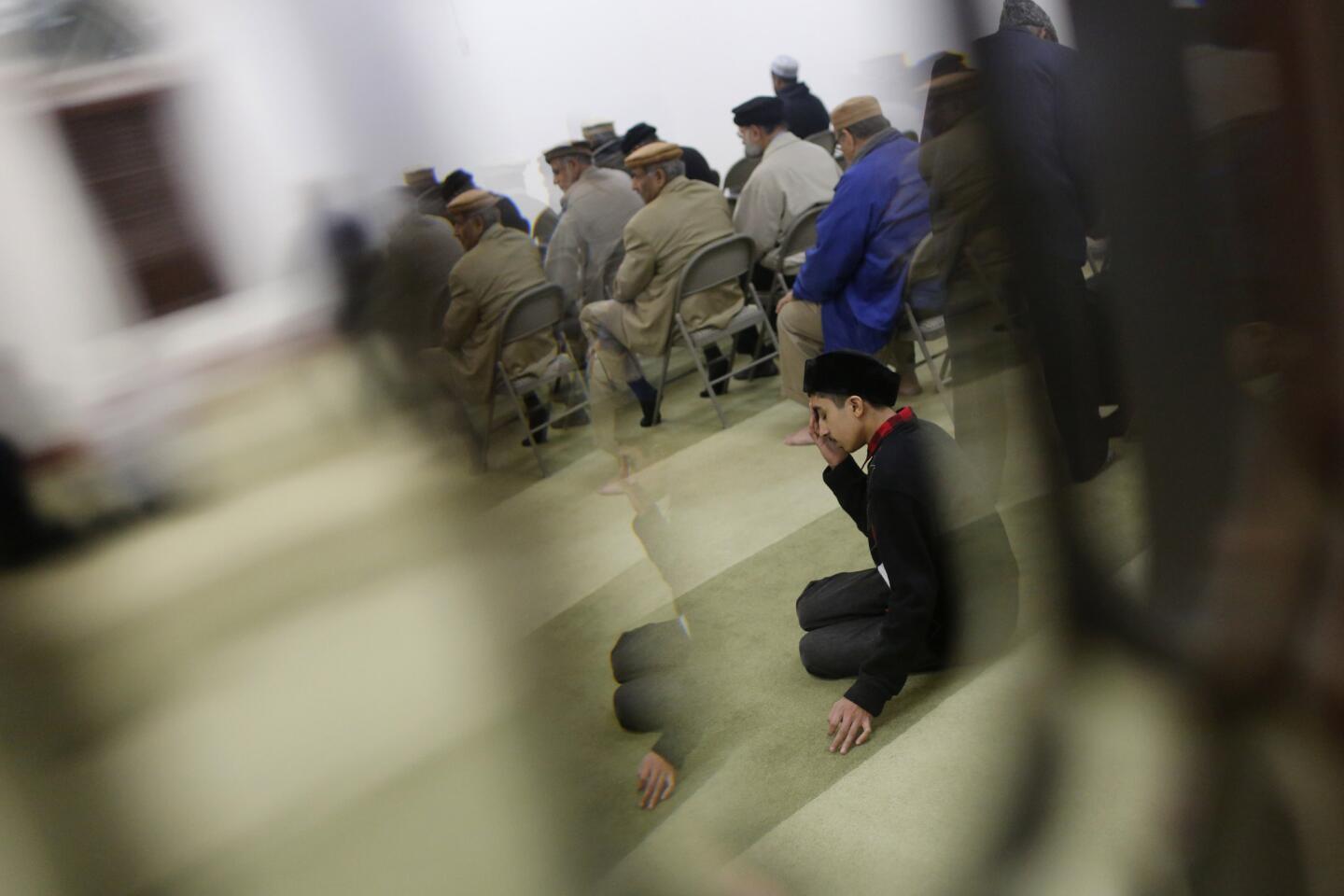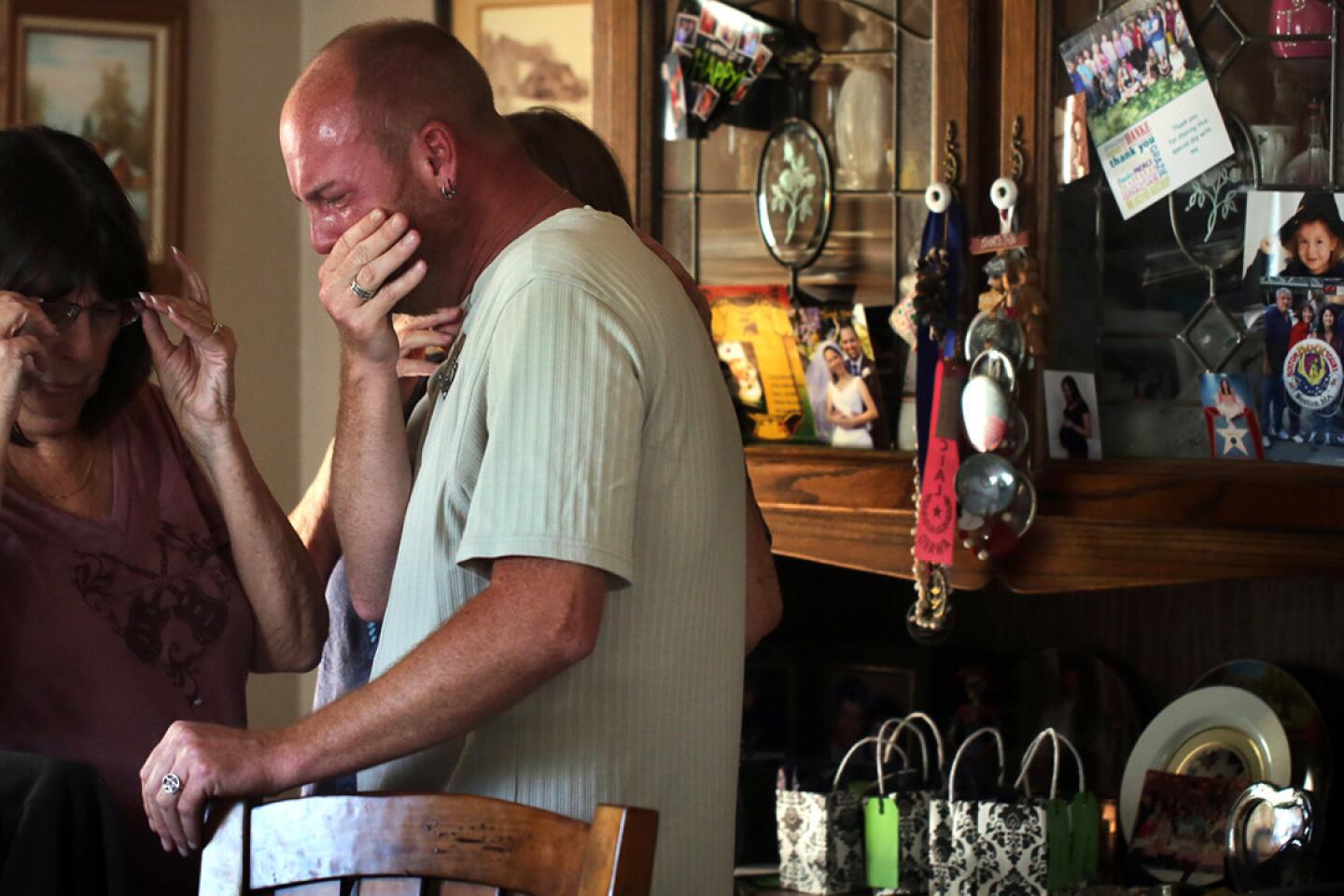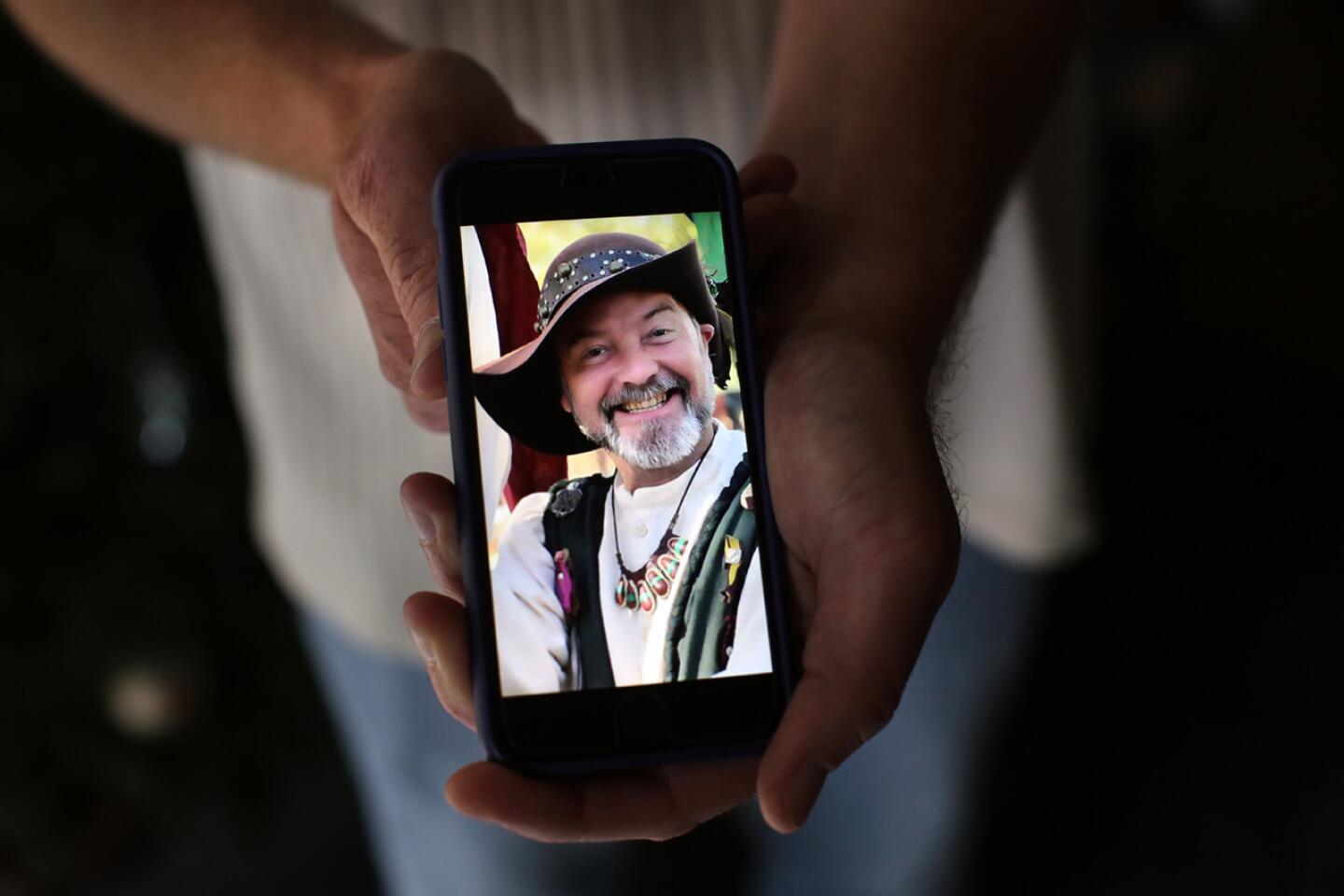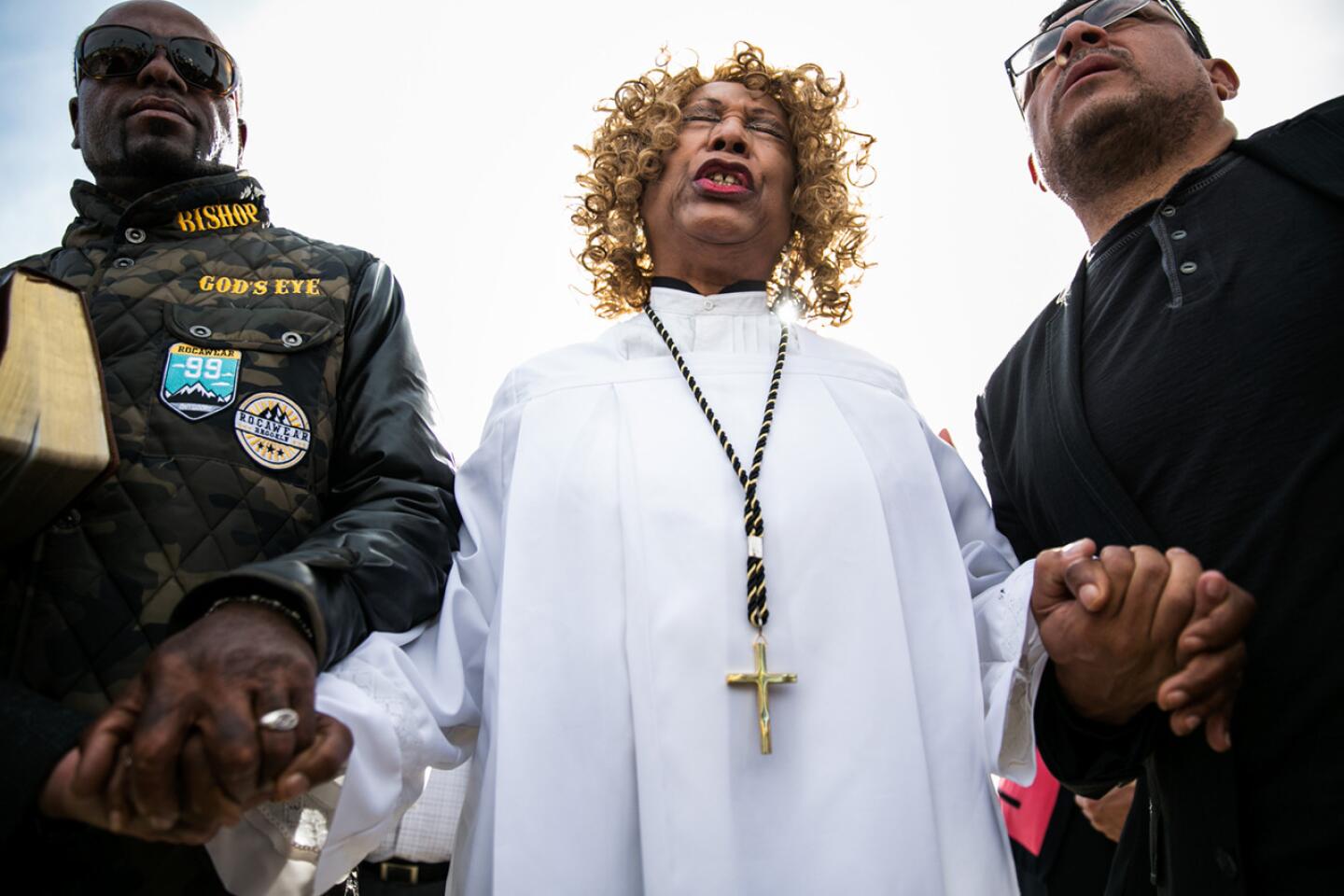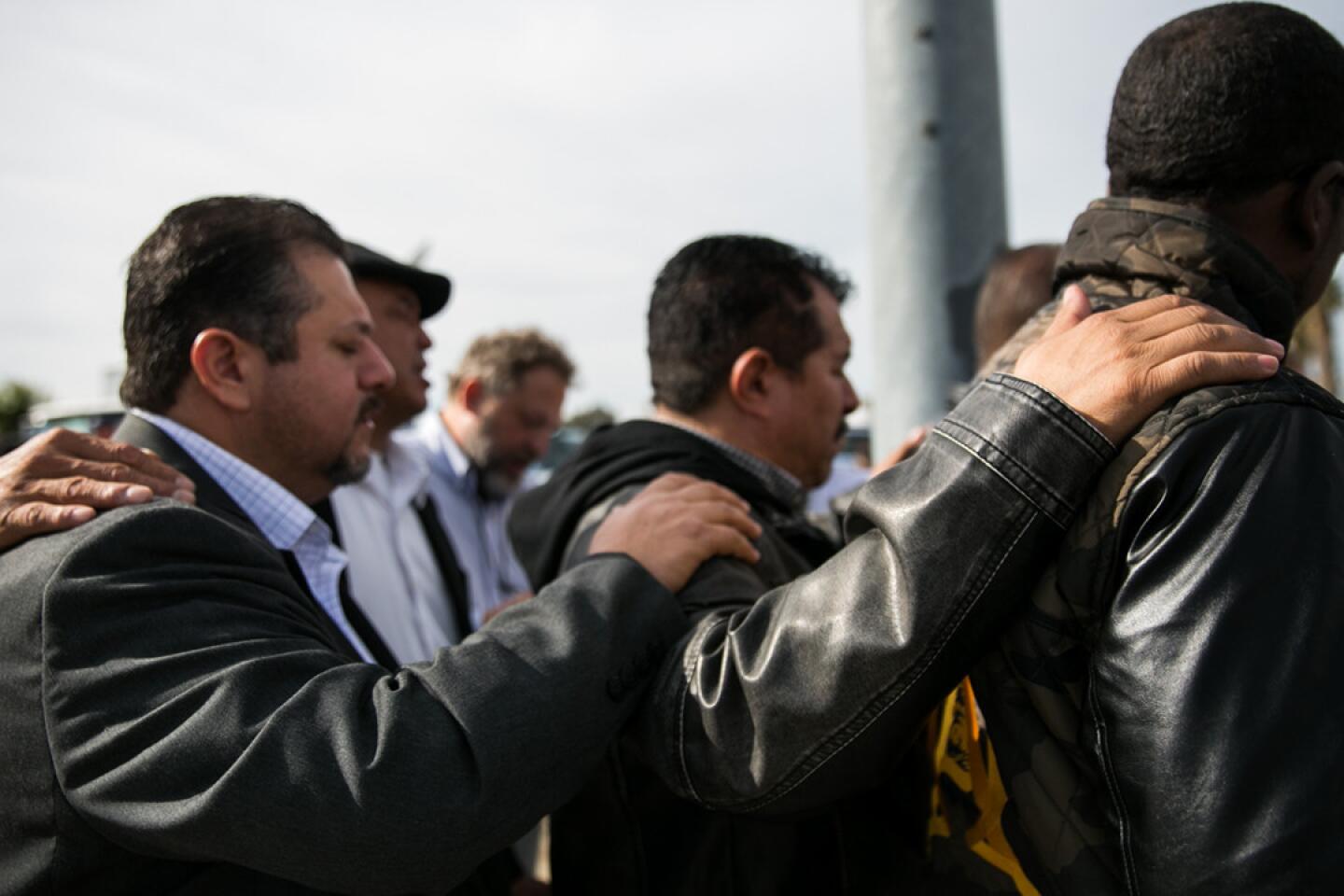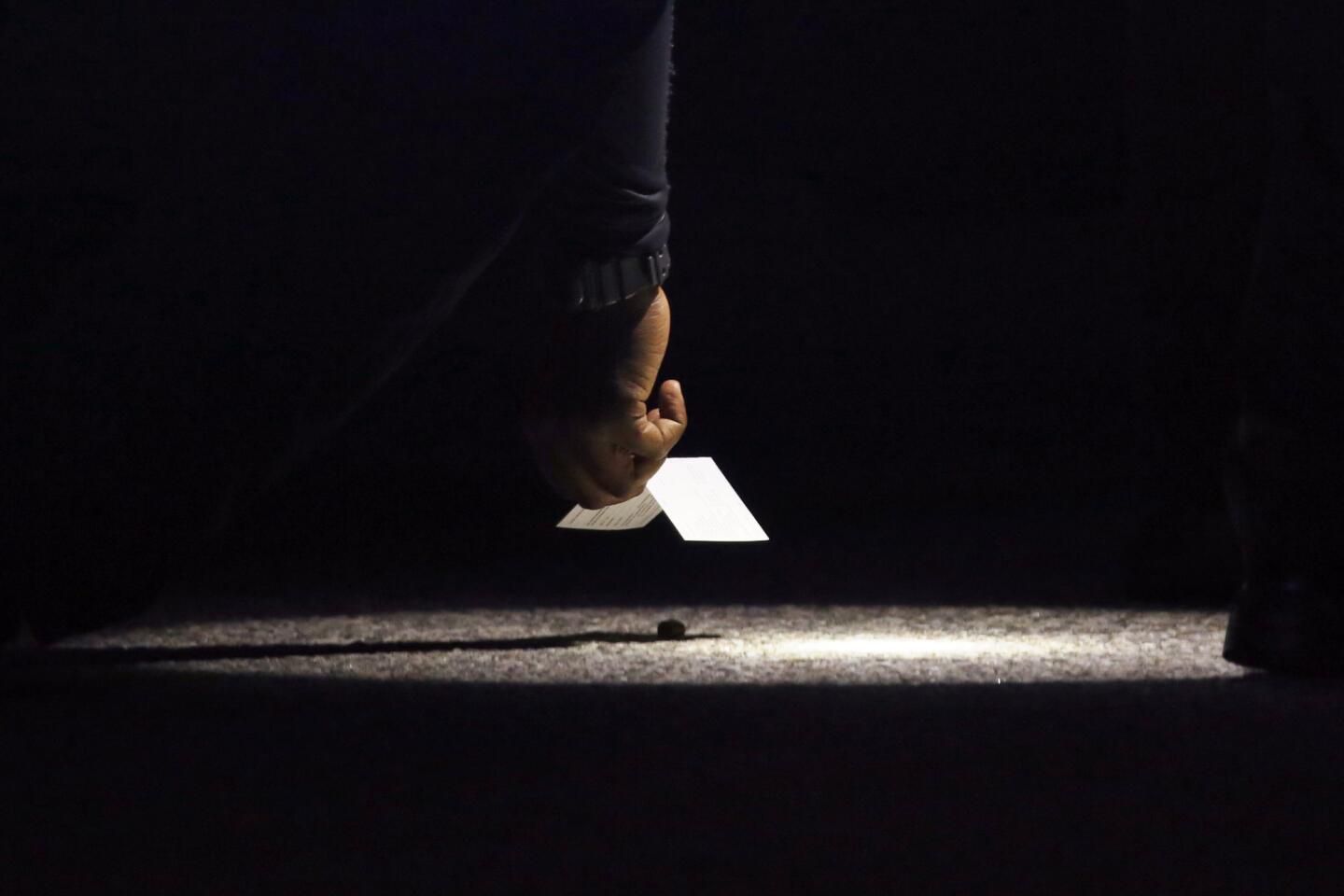Feds probe whether San Bernardino attack’s explosives are linked to al-Qaida website, source says
Investigators are trying to determine whether explosives left at the scene of the mass shooting in San Bernardino on Wednesday that left 14 dead were based on a design found in an online publication of Al Qaeda in the Arabian Peninsula, according to one law enforcement source.
Authorities continue to probe for possible links to terrorism after Syed Rizwan Farook and Tashfeen Malik unleashed volleys of gunfire on a holiday party at the Inland Regional Center. They amassed an arsenal of weapons and explosives in their home, including a dozen pipe bombs and thousands of rounds of ammunition, officials said Thursday.
The source, who spoke on condition of anonymity, noted that the design is easily accessible and doesn’t mean the attack was related to Al Qaeda. Police said the device included three pipe bombs attached to a remote-controlled device.
Inspire magazine has generated much interest and concern among terrorism officials in recent years. Its first issue in 2010 included an article titled “Make a Bomb in the Kitchen of Your Mom.”
“It’s like the Vanity Fair of jihadi publications,” Bruce Hoffman, director of security studies at Georgetown University told The Times in 2010. “It’s glossy and snarky, and is designed to appeal to Generation Z.”
The FBI and the Department of Homeland Security’s intelligence and analysis office warned that year that Inspire “could appeal to certain Western individuals and could inspire them to conduct attacks in the United States in the future.”
The arsenal amassed by the suspects suggested a level of planning that added to investigators’ concern that the shootings, which left 14 dead and 21 injured, were far more than a spontaneous response to a workplace dispute.
A senior federal government official told The Times that Farook was in contact with a small number of suspected extremists. There are also indications that the 28-year-old gunman communicated with at least one person who is currently being monitored as a potential terror suspect, the source said.
Farook’s connection to the potential terror suspect may be only tangential, the source said, but the link suggests there may be a “deeper terror matrix” behind the San Bernardino shootings.
But Rep. Adam Schiff (D-Burbank), the ranking minority member of the House Intelligence Committee who has been briefed on the investigation, said Thursday that federal agents have yet to turn up evidence that Farook was “radicalized.”
Farook, police said, was involved in a dispute at the party for fellow employees of the San Bernardino County Department of Public Health shortly before the gunfire broke out.
Farook was born in Chicago, and had worked at the health department as an inspector for five years. Malik was born in Pakistan, according to a federal law enforcement source.
Farook’s foreign travel didn’t raise alarm bells with federal agencies because he didn’t spend several months overseas or travel to places where he could have spent a long period of time in a jihadist training camp, a senior law enforcement official familiar with the investigation said. The official spoke on condition of anonymity.
Farook traveled to Saudi Arabia in 2013 during the Hajj pilgrimage to Mecca and also visited Saudi Arabia in July 2014 for nine days to pick up Malik and bring her to the United States on a K-1 fiance visa. Neither trip lasted very long, the official said. The official has seen no record of Farook traveling to Pakistan, as the assistant director for the FBI’s Los Angeles field office said in a news conference Thursday.
Malik applied for permanent residency on Sept. 30, 2014, and, after a background check by the FBI and the Department of Homeland Security, received a permanent resident green card in July 2015. The Saudi embassy in Washington had no records indicating that Malik was a Saudi citizen.
Farhan Khan, a brother-in-law of Farook, told The Times on Wednesday he knew the suspect for much of his life and last saw him a week ago.
“I cannot express how sad I am,” he said at an Islamic Center in Anaheim. “I have no idea why he would do that…. I am in shock that something like this would happen.... My condolences to the people who lost their life.”
In an interview with CBS News broadcast Friday, Farook’s sister Saira Khan also expressed disbelief.
“I can never imagine my brother or my sister-in-law doing something like this. Especially because they were happily married, they had a beautiful 6-month-old daughter. It’s just mind boggling why they would do something like this,” she said.
She described her brother and sister-in-law as “shy and quiet” people. She said she liked his brother’s wife, adding “she kept to herself.”
Meanwhile, FBI agents on Thursday searched a home in Corona for a second time as they sought more information about the suspects.
The agents obtained a federal search warrant, said Thom Mrozek, a spokesman for the U.S. attorney’s office in Los Angeles.
The search did not result in any arrests, said FBI spokeswoman Laura Eimiller.
Neighbors said FBI agents and SWAT officers participated in the search.
“FBI agents with bullhorns showed up at 5 a.m.,” said Lorraine Otto, who lives next door to the home on Forum Way. “They kept saying, ‘This is the FBI. Open the door. If you don’t open the door, we’ll break it open.’
Eventually, a man emerged. “The agents asked, ‘Who else? Is young child in there?’ The man said, ‘My daughter.’” Moments later, Otto said, a woman with a young child in her arms emerged from the residence.
Jessica Lopez, 29, who lives across the street, also witnessed the raid, which ended about 6 a.m. Thursday. “It was as though an entire army poured into that place,” she said. “One man was led away in handcuffs.”
More to Read
Start your day right
Sign up for Essential California for news, features and recommendations from the L.A. Times and beyond in your inbox six days a week.
You may occasionally receive promotional content from the Los Angeles Times.
